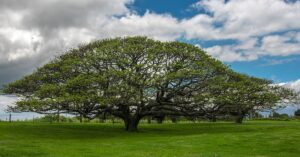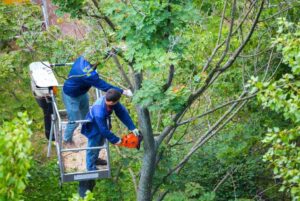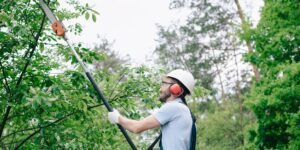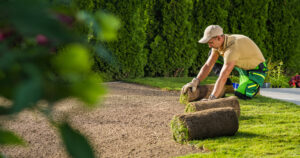A Comprehensive Guide
Removing a tree in New York City (NYC) requires a thorough understanding of the local laws and regulations. Whether you’re a homeowner looking to clear space for construction, concerned about a tree’s health, or trying to manage safety risks, obtaining a tree removal permit is a legal requirement in NYC. This article provides a step-by-step guide on how to apply for a tree removal permit, the rules surrounding tree removal, and some useful tips for navigating the process efficiently.
Understanding the NYC Tree Removal Regulations
Why Do You Need a Permit?
NYC takes its green spaces and urban forestry seriously. The city’s Department of Parks and Recreation (NYC Parks) oversees the management and preservation of all public trees, including those on sidewalks, streets, parks, and some private properties. The primary reasons for needing a permit include:
- Public Safety: Removing trees that pose a risk to public safety, such as those that are dead, diseased, or damaged.
- Construction and Renovation Projects: Any construction work affecting sidewalks, streets, or other public spaces with trees requires a permit to ensure that trees are removed or protected properly.
- Tree Health and Maintenance: If a tree is in poor health or requires pruning, a permit is required to carry out the work legally and responsibly.
When Is a Permit Required?
Street Trees
If the tree is located on a public sidewalk or street, it is considered a “street tree.” For street trees, NYC law requires a permit for any form of tree work, including removal, pruning, planting, or transplanting. The city’s forestry division must approve and supervise all such activities.
Private Property Trees
For trees located on private property, a permit is generally required only if:
- The property is within certain zoning districts where tree removal is regulated.
- The tree is considered a protected species under NYC’s tree preservation ordinances.
- The tree removal is related to new construction or other land use activities that require city permits.
However, private homeowners generally have more leeway in removing trees on their own property if the tree is not subject to these special regulations. Consulting the Department of Buildings (DOB) is a good practice to determine if a permit is necessary for private property tree work.
How to Apply for a Tree Removal Permit in NYC
1. Determine if a Permit is Necessary
Start by identifying whether the tree is on public property (street tree) or private property. For street trees, permits are always required. For private property, check zoning and tree preservation regulations to determine if your tree is protected.
2. Contact NYC Parks for Street Trees
For any tree removal, pruning, or planting that involves a street tree, contact NYC Parks’ Forestry Division. You can reach them by calling 311 or by visiting the NYC Parks Forestry page.
To apply for a permit:
- Complete a Street Tree Work Permit Application: This form can be found on the NYC Parks website and should be filled out with the specifics of your tree work, including the reason for removal.
- Submit Supporting Documentation: This includes a photo of the tree, a detailed site plan if related to construction, and any arborist assessments if the tree is diseased or hazardous.
NYC Parks will then review your application, and if approved, the department may assign an arborist to supervise the work.
3. Work with a Certified Arborist or Contractor
If your permit is approved, NYC requires that all work involving street trees be done by a licensed arborist or tree contractor. This is to ensure that the tree removal or pruning is done safely and in accordance with the city’s forestry standards.
NYC Parks provides a list of certified tree contractors, which can be found on their website or by calling 311.
4. For Private Property Tree Removal Permits
For private property permits, you will need to:
- Consult the Department of Buildings (DOB): If the tree removal is related to construction, demolition, or any zoning regulations, reach out to the DOB for guidance.
- Apply Through DOB if Needed: If your tree removal falls under any regulation requiring a permit, you can apply directly through the DOB, either in person or online via their permitting system.
Costs and Timeframes for Permits
| Type of Permit | Applicable Location | Cost | Typical Timeframe |
|---|---|---|---|
| Street Tree Work Permit | Street/Sidewalk Trees | $0 (Free of Charge) | 2-4 weeks for approval |
| Private Property Permit | Zoned or Protected Property | Varies (Typically $100+) | 2-6 weeks, based on project size |
The cost of tree removal itself can vary widely based on the size, condition, and location of the tree. Always check with a certified arborist for accurate cost estimates.
NYC Parks Tree Preservation Policies
Replacement and Replanting
If you receive a permit to remove a street tree, NYC Parks may require you to replace it with another tree. The replacement tree must be planted within the city limits and is usually required to be of a similar species or one that matches the city’s current urban forestry plan.
In some cases, a fee may be assessed instead of replanting, which goes toward the city’s tree fund for planting and maintenance throughout NYC.
Pruning and Maintenance Rules
NYC Parks strictly regulates the pruning of street trees. Unauthorized pruning is prohibited and can result in fines. All pruning must adhere to the city’s standards and should only be done by a certified arborist. Homeowners are responsible for the maintenance of street trees adjacent to their property but must follow city guidelines and obtain the necessary permits.
Tips for Navigating the Permit Process
- Start Early: Since permits can take anywhere from 2 to 6 weeks to process, start your application as soon as you identify the need for tree removal or work.
- Work with Professionals: Ensure that you use a certified arborist who is familiar with NYC Parks’ standards and regulations. Professional help will streamline the process and ensure compliance.
- Keep Records: Document every step of the process, from the application to communication with city officials and the tree work itself. This will help if any disputes or questions arise later.
- Check for Special Zoning Rules: NYC zoning laws can be complex, so make sure to double-check with the DOB if your private property is within a protected zone or if any additional requirements apply.
Examples of NYC Tree Removal Situations
Case 1: Homeowner Pruning a Street Tree
A homeowner on the Upper West Side wanted to prune branches from a street tree that were obstructing their front entrance. After calling 311 and applying for a permit through NYC Parks, they were granted approval for supervised pruning by a certified arborist, ensuring the tree was safely trimmed without damage.
Case 2: Construction Project in Queens
A developer in Queens was planning to build a new apartment building, which required removing a street tree for access. They applied for a permit through the Department of Buildings and were required to pay a fee to the city’s tree fund as part of the approval process.
Consequences of Removing a Tree Without a Permit
Removing or significantly damaging a street tree without proper permits can result in significant fines and penalties. NYC Parks can issue fines ranging from several hundred to thousands of dollars, and offenders may be required to plant multiple trees as restitution. Therefore, it is crucial to follow all rules and obtain the necessary permits before proceeding with any tree removal work.
Conclusion
Obtaining a tree removal permit in NYC is a necessary step for any work involving street trees or certain trees on private property. Whether you’re managing construction, addressing safety concerns, or dealing with property maintenance, understanding the permit process, working with certified professionals, and following city regulations can make your tree work hassle-free and compliant.
For more information or to start the permit process, visit:
Adhering to NYC’s tree removal policies helps preserve the city’s urban forest and ensures the safety and well-being of residents and properties across the city.






